Wake Island Falls
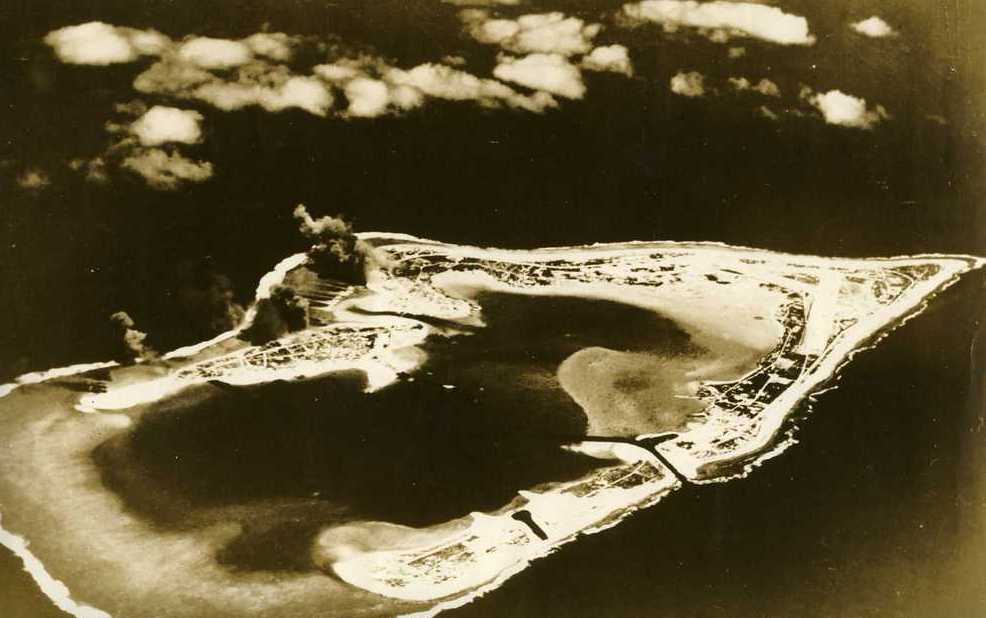
Aerial view of Wake Atoll, consisting of Wake, Peale, and Wilkes Islets. Donated in memory of Linus P. Esnault, U.S.A.F. and Walter D. Goldman, U.S. Army, The National WWII Museum Inc., 2008.014.024
More American Territory Lost
Wake Island was bombarded shortly after the Japanese attacked Pearl Harbor and Guam on 7/8 December 1941. For two weeks, the tiny atoll was valiantly defended by a small garrison of US Navy and Marine personnel under the command of Navy Cmdr. Winfield S. Cunningham and Marine Maj. James P. S. Devereux.
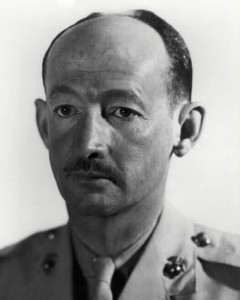
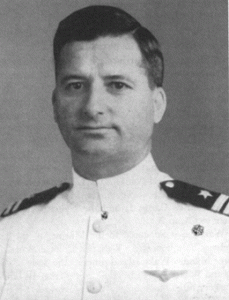
Major Devereux; Commander Cunningham
Despite lacking much-needed equipment such as radar, and not having the manpower to carry out necessary defense actions like burying communication lines, the men on Wake fought off an initial Japanese landing attempt on 11 December. During this onslaught, two Japanese destroyers were sunk—one, the Hayate, was hit by a 5” gun battery, and the other, the Kisaragi, was taken by the F4F Wildcat pilots of Marine Fighting Squadron [VMF] 211. These were the first major Japanese ships sunk during World War II. Capt. Henry “Hammerin’ Hank” Elrod was the first Marine aviator to earn the Medal of Honor (posthumous) during the war, partly for his role in sinking the latter destroyer.
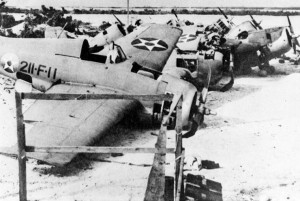
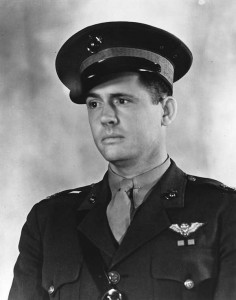
Wreckage of VMF-211’s F4F Wildcats; Capt. Henry Elrod
The Navy sent a relief Task Force under Admiral Frank Fletcher en route to Wake, but when word was received that the Japanese Navy had beaten them there, the convoy returned to Pearl Harbor. On this day 70 years ago, 23 December 1941, nearly 1,500 Japanese landing troops made a second landing attempt, this time succeeding, and took the island after a few hours of combat. More than 430 American servicemen and 1,100 civilian workers were taken prisoner. All but 98 were transferred to POW camps elsewhere. Those who remained were forced into labor, building up coastal defenses for the Japanese occupying force. Following a small air raid from the USS Yorktown in October 1943, the island’s commander, Shigematsu Sakaibara, had all of the remaining POWs executed for fear of an imminent invasion. After the war, Sakaibara was tried and convicted of war crimes, sentenced to hang in June 1947.

Wake surrendered by the defeated Japanese, September 1945. Photo courtesy of the National Archives.
Wake, unlike Guam and the Philippines, was never recaptured during the war. It was surrendered on 4 September 1945. Despite ultimately resulting in lost territory, the Battle of Wake Island was something of a legend in its own time. Following the tragedy of Pearl Harbor and the speedy loss of Guam, the defenders on Wake represented a symbol of hope for a devastated nation. The film Wake Island (1942) was already in production before the battle had even ended. It would go on to receive four Oscar nominations.
The story of Wake Island is featured in the Museum’s current special exhibit, Infamy: December 1941, on view through February 19, 2012. For an interactive map, artifacts, images, and an interview with veteran Jack Skaggs, a member of the 5” gun battery that sunk the Hayate, see the exhibit’s website: Infamy: December 1941.
This post by Curator Meg Roussel
- Posted :
- Post Category :
- Tags :
- Follow responses to this entry through the RSS 2.0 feed. You can skip to the end and leave a response. Pinging is currently not allowed.




Leave a Reply